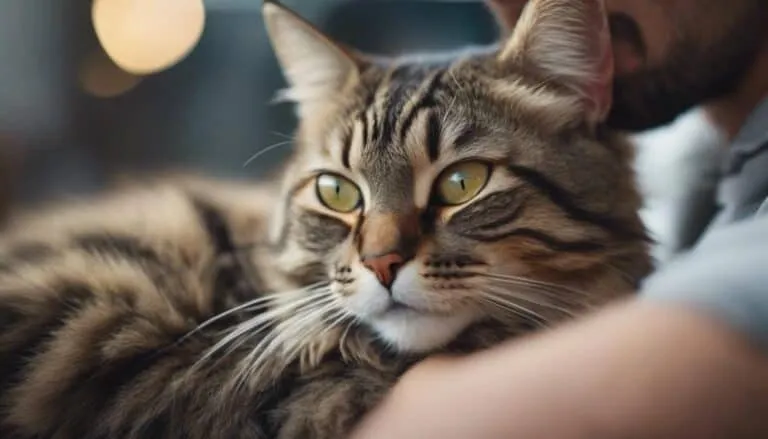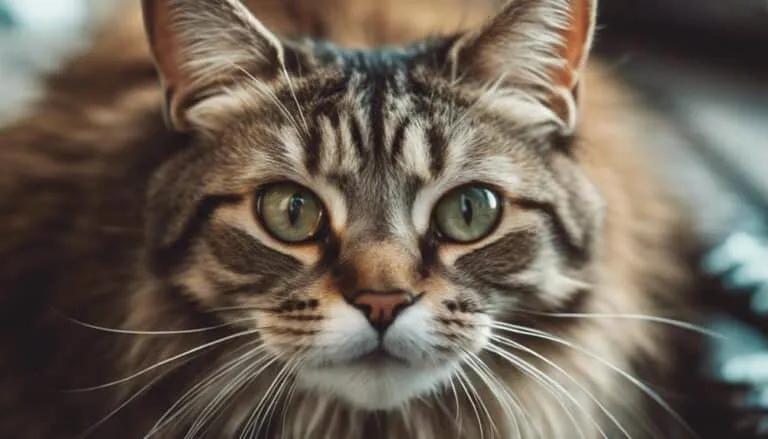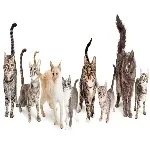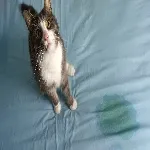The Best Fluffy Pancakes recipe you will fall in love with. Full of tips and tricks to help you make the best pancakes.

The enchanting beauty of frosty ferns and the mischievous nature of cats may seem like a perfect combination, but the reality is far from idyllic.
As pet owners, it is our responsibility to be aware of the potential dangers lurking within our homes and gardens.
In this discussion, we will explore the unexpected perils that frosty ferns can pose to our feline companions. From the characteristics of these plants to the signs of poisoning in cats, we will delve into the crucial information every cat owner should know.
Brace yourself for a journey that uncovers the hidden dangers and reveals the necessary steps to safeguard our beloved cats.
Key Takeaways
- Frosty ferns are popular plants associated with the winter holiday season but can be toxic to cats.
- Cats may exhibit various symptoms of poisoning if they ingest toxic plants, including nausea, vomiting, weakness, and seizures.
- It is important for cat owners to be aware of toxic plants and take preventive measures to protect their pets.
- If a cat ingests a toxic plant, it is crucial to remove the plant, contact a veterinarian, and follow their guidance without inducing vomiting without professional advice.
Frosty Ferns: An Unexpected Danger
Frosty ferns, despite their delicate appearance and popularity among gardeners, can pose an unexpected danger to cats. These plants, although visually appealing, can present health risks to our feline companions.
It is crucial for cat owners to be aware of the potential dangers associated with frosty ferns and take necessary precautions. When ingested, certain components of the plant can be toxic to cats, leading to various health issues. Symptoms of poisoning may include nausea, vomiting, diarrhea, weakness, tremors, and seizures.
To ensure the safety of our cats, it is advisable to explore cat-friendly alternatives to frosty ferns. This can include non-toxic plants such as spider plants, Boston ferns, and African violets. By choosing safe alternatives, cat owners can enjoy the beauty of plants while prioritizing the health and well-being of their beloved pets.
Growing Frosty Ferns: Tips and Precautions
When cultivating frosty ferns, it is essential to take specific precautions and follow proper techniques to ensure optimal growth and minimize potential risks. Frosty ferns require careful care to thrive in indoor environments.
To provide the ideal conditions for these delicate plants, maintain high humidity levels and keep temperatures between 60 and 80 degrees Fahrenheit. Plant them in high-quality indoor potting soil and consider placing them in terrariums or glass globes to enhance humidity.
Overwatering should be avoided to prevent root rot and browning of the leaves. Additionally, it is crucial to prevent cat poisoning by being aware of toxic plants and taking necessary measures to protect cats from ingesting them.
Educate yourself on the plants that are toxic to cats and make informed gardening choices to safeguard your feline companion.
Plants Toxic to Cats: A Comprehensive Guide
What plants should cat owners be aware of to ensure the safety and well-being of their feline companions? Preventing plant poisoning and ensuring a cat-friendly environment involves being knowledgeable about plants that are toxic to cats. Here is a comprehensive guide to help cat owners make informed choices and protect their pets:
- Poinsettias and holly: These plants are particularly toxic to cats, especially during the winter months.
- Sago palms, lilies, oleander, daffodils, azaleas, amaryllis, and aloe: These are other examples of plants that can be harmful to cats.
- The American Society for the Prevention of Cruelty to Animals (ASPCA): Provides information on toxic plants and can be a valuable resource for cat owners.
- The FDA: Publishes bulletins for pet owners regarding pet safety, including articles on holiday hazards.
- Consider safe alternatives: Opt for safe plants that are non-toxic to cats, such as spider plants, Boston ferns, or catnip, to create a cat-friendly environment.
Recognizing Poisoning Symptoms in Cats
Cats may display various symptoms of poisoning when exposed to toxic plants. It is important for cat owners to be able to recognize these symptoms in order to provide timely first aid and seek proper veterinary care.
Common toxic plants that can cause poisoning in cats include poinsettias, holly, Sago palms, lilies, oleander, daffodils, azaleas, amaryllis, and aloe.
Nausea, vomiting, and diarrhea are common signs of plant poisoning in cats. Other symptoms may include weakness, a wobbly gait, restlessness, tremors, seizures, drooling, and loss of appetite.
It is crucial to take immediate action if a cat ingests a toxic plant, such as removing the plant, rinsing the cat's mouth, and contacting a veterinarian for guidance. Never induce vomiting without clearance from a veterinarian.
Prompt recognition and appropriate first aid can greatly increase the chances of a positive outcome for a poisoned cat.
Emergency Actions for Cat Ingestion of Toxic Plants
In the event of a cat ingesting a toxic plant, immediate action is necessary to ensure the safety and well-being of the feline companion. Here are some emergency actions to take if your cat ingests a toxic plant:
- Prevent further ingestion: Remove the plant and rinse the cat's mouth to prevent further exposure to toxins.
- Ensure safety: Move the cat to a safe place to prevent injury if it becomes dizzy or disoriented.
- Identify the plant: Try to identify the plant or take clear pictures to show the veterinarian, as this information will help in determining the appropriate treatment.
- Contact the veterinarian: Immediately contact the veterinarian to explain the situation and seek guidance on the next steps.
- Avoid inducing vomiting: Never induce vomiting without clearance from a veterinarian, as some toxins can cause more harm if regurgitated.
Preventing plant toxicity is crucial for the well-being of our feline companions. It is important to be aware of common toxic plants such as poinsettias, holly, Sago palms, lilies, oleander, daffodils, azaleas, amaryllis, and aloe.
Protecting Your Feline Friends: Gardening Safely
To ensure the well-being of our feline companions, it is crucial to practice safe gardening techniques that protect them from potential hazards.
When creating a cat-friendly garden, it is important to be aware of the plants that are toxic to cats and to choose non-toxic plant alternatives. Some common plants that are toxic to cats include poinsettias, holly, Sago palms, lilies, oleander, daffodils, azaleas, amaryllis, and aloe. These plants can cause symptoms such as nausea, vomiting, diarrhea, weakness, tremors, and seizures in cats.
To protect our furry friends, consider planting non-toxic alternatives such as catnip, cat grass, spider plants, and roses.
Additionally, it is recommended to consult resources such as the American Society for the Prevention of Cruelty to Animals (ASPCA) or the FDA for information on toxic plants and to make informed gardening choices.
Conclusion
In conclusion, the coexistence of frosty ferns and cats can have deadly consequences for our feline companions. It is crucial for cat owners to be aware of the toxic nature of these plants and take necessary precautions to ensure the safety of their pets.
Ingestion of frosty ferns can lead to severe poisoning in cats, highlighting the importance of recognizing the symptoms and taking immediate action. By prioritizing pet safety and avoiding the deadly combination of frosty ferns and cats, we can protect our beloved feline friends from harm.








